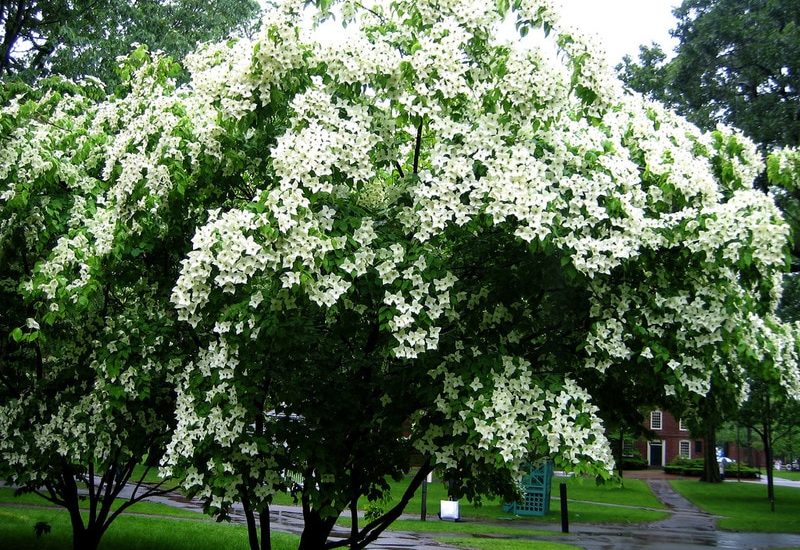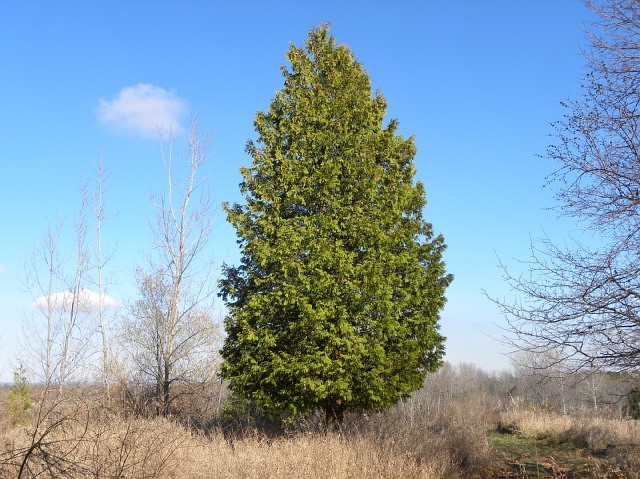The Best Magnolia Trees to Plant in Connecticut
Magnolia trees are a beautiful addition to any yard in Connecticut. These trees are uniquely adaptable to seasonal changes and bring color to the garden when they bloom in the spring. This article will delve into Magnolia trees’ planting process and care to achieve the best results. It will also show which Magnolia trees are best to plant in Connecticut. Here are some of the best Magnolia trees to plant in Connecticut:
Sweetbay Magnolia
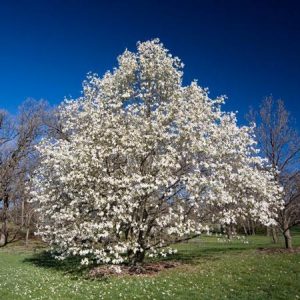
One of the best species to grow here is the Sweetbay Magnolia, as the Connecticut area does not experience extreme weather conditions. Also called the Swamp Magnolia, the Sweetbay Magnolia is a lemon-scented tree that produces white flowers. This tree blooms in early summer.
The Sweetbay Magnolia prefers wet, moist soils and is ideal for areas prone to flooding. It also does not spread widely, which makes it suitable for growing in small spaces. This deciduous variety of Magnolia has few problems with pests and diseases.
Star Magnolia
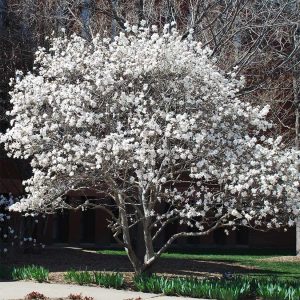
The star Magnolia tree species can withstand the cold winter chill of the Connecticut area. This species is also deciduous and grows as a small tree or a large shrub. The star magnolia blooms in the winter or early spring.
Like the Swamp Magnolia, the Star Magnolia also produces white flowers. However, the flowers are easily affected by frost, and it is best to plant this tree variety under shade. The Star Magnolia is ideal for small spaces. It grows best in well-drained soils and full sun.
Southern Magnolia
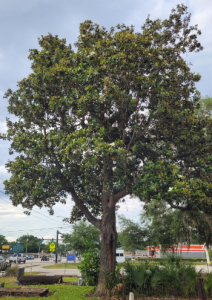
Another Magnolia tree species to plant in Connecticut is the Southern Magnolia. Specifically named Magnolia Grandiflora, the Southern Magnolia is a large tree that requires a big piece of land to grow. This species of magnolia is evergreen.
The Southern Magnolia also produces creamy white flowers. These flowers appear from mid-summer to the beginning of autumn. The flowers are large and can grow up to 12 to 15 inches. Its glossy leaves have a leathery texture and an elliptical shape. The Southern Magnolia tree grows best in partial shade, unlike other Magnolias that thrive in full sun. The tree, most popularly grown in Mississippi and Louisiana, does best in well-drained soil.
Saucer Magnolia
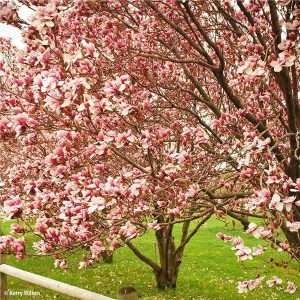
The saucer Magnolia tree species can withstand the humid summer temperatures of the Connecticut area. It is also known as Magnolia x soulangeana. This tree grows up to 45 feet and has a wide spread. Popularly grown in the front yard, the Saucer Magnolia is a deciduous tree. This tree blooms in early fall before the leaves appear. The flowers come in various shades, ranging from rich reddish purple to white.
Interestingly, the flowers are not circular, as the name saucer would imply. Instead, they are closer to a tulip shape. The flowers are also sensitive to frost, and this hybrid plant does well in full sun to partial shaded, sunny conditions. The Saucer Magnolia is intolerant of infertile soil.
Anise Magnolia
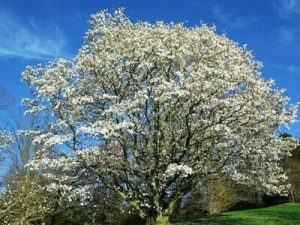
The USDA classifies the state of Connecticut under 7-8 climatic zones. The area is, therefore, suitable for the growth of the Anise Magnolia tree, also known as the Willow Leaf Magnolia tree, because of the similarity in the shapes of its leaves. This tree grows up to fifty feet and broadens in its later years. The Anise Magnolia, native to Japan, gets its name from the scent it produces when crushed. The tree is quite a spectacle because it blooms early with plenty of white flowers.
The Anise Magnolia also features pink fruits and a gray bark that is especially noticeable against the white blandness of winter. Often grown in the backyard, this tree does well in full sun. However, the tree should be protected from the early morning sun to prevent it from being affected by frost. The site should also have well-drained soil.
Cucumber Mongolia
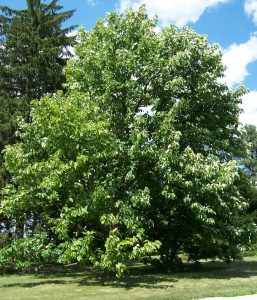
The last tree one can consider planting in Connecticut is the Cucumber Magnolia. This species gets its name from the cucumber-shaped fruits it produces. Moreover, the fruits turn red from green as they mature. This tree grows up to eighty feet. The
Cucumber magnolia is uniquely known for its ability to withstand icy conditions. And this tree produces relatively large leaves and small greenish-white tulip-shaped flowers. Also, the cucumber magnolia can be a good shade tree due to its large leaves and vast spread. The cucumber magnolia does best in partly shaded to total sun exposure.
Planting the Magnolia Tree
Planting the Magnolia tree is a relatively straightforward process. Planting a Magnolia tree can begin at various stages. All options are starting from a seed, starting from a cutting, or purchasing a seedling from a nursery.
Planting a tree from seed requires one to peel and scarify the hard outer layer of the seed and then store it in a moist plastic bag to prepare it for germination in the spring. The seeds may also be soaked in water before putting them on the ground.
Factors That Support the Growth of the Magnolia Tree
One must consider several factors before planting this kind of tree in Connecticut. These factors include sunlight, the space available for growth, the acidity and fertility of the soil, and soil drainage. This is because different species thrive in other conditions one can inquire about before purchasing.
It is best to take your time with this decision, as magnolias are slow-growing trees that can take up to two decades to mature. Most Magnolia trees thrive in acidic to neutral soils. Magnolia trees also prefer to grow away from other plants due to their shallow roots, so undergrowth is discouraged.
It is also best to plant these trees at least ten feet away from buildings or concrete walls to allow for them to spread. When considering space, smaller types of magnolia trees can also be planted in pots.
The planting
The planting of Magnolias is done in the autumn. Dig a hole as deep as the pot that the tree comes in. Please don’t damage the fleshy roots, as they support future flowering. Ensure the point where the tree has been grafted is above the soil level. Magnolia trees do not need fertilizer. However, adding garden compost around it is essential when you put it in the hole.
The plant should be watered frequently and mulched until it is well established. External support may be needed to plant giant magnolias to prevent wind damage. When transplanting a Magnolia tree, ensure the hole is dug wide as the roots are shallow and spread wide instead of deep. Ensure you mulch and water the base of the tree often.
Problems Facing Magnolia Trees
There are not many problems that face the planting and growing of Magnolia trees. In fact, it is a plant recommended for beginners as the trees are not prone to many pests and diseases. However, Magnolia trees can get stressed by a lack of water. They can also be affected by strong winds and frosts that cause damage to the flowers. Frost damage may also cause blackened foliage. Heavy pruning can also prevent flowering as the buds may be damaged.
Although rare, Magnolia trees may also be affected by fungal infections. Bracket fungus usually causes branch decay, which shows up as large fungi on the branches and thinning of the tree’s crown. The honey fungus spreads underground and kills the roots of the plant, causing the plant to die. The honey fungus manifests as a lack of flowers and pale foliage.
Magnolia trees can harbor pests such as aphids, scales, and caterpillars. These pests do not often cause the trees to die. Pest infestations cause the plant’s leaves to wit and fall off prematurely. Magnolia trees may also be infested by spider mites that usually appear as red or black webbing under the leaves.
Magnolia trees are also susceptible to leaf spot disease caused by a parasitic alga. A round fuzzy colony can identify the condition on the top of the leaf. The fuzzy spot then turns gray, at which point the leaves die and fall off the tree prematurely.
Caring for the Magnolia Trees
1. Proper planting
Proper care and maintenance of magnolia trees begin at the planting stage. The right side sets the tree off to a good start in full or partial sun and suitable soil. A healthy magnolia tree must also be protected from direct winds to allow the tree to grow strong in its early life and prevent the loss of buds and flowers in the later stages.
It is also important to avoid growing Magnolia trees in alkaline soils. However, the soil PH can be corrected through the application of Iron sulfate once a year in early spring to ensure that the earth is suitably acidic for the plant.
2. Plant Nutrition
When it comes to plant nutrition, apply a slow-release granular fertilizer once a year. Using the fertilizer when the tree starts to produce leaves in the fall is advisable. Magnolia trees require frequent watering in their early life. Established trees should be cleaned during prolonged dry seasons to avoid the wilting of leaves. Watering should be applied sparingly when the tree grows, as most Magnolia trees do not thrive in highly moist soil. Wet, cold soil can also harbor ideal growing conditions for bacteria and fungi that may infect and kill the tree.
It is essential to apply mulch at the base of the tree to protect the shallow tree roots from temperature fluctuations. The mulch also helps to keep moisture in the soil that is easily accessible to the roots. Mulching also prevents the growth of weeds around the plant that may compete for water and nutrients, causing the tree not to grow properly.
3 Pests and diseases
Several organic measures can be taken to control plant pests and diseases. Pests can be controlled by introducing predator insects such as wasps and ladybugs, which are natural enemies of thrips and aphids. Birds can also help control the population of caterpillars that cause damage to the plant’s leaves. Fungal and bacterial diseases can be controlled and prevented by regularly collecting all fallen leaves at the base of the tree.
Pruning tree leaves and branches also ensure adequate airflow around the plant to prevent excessive moisture from building up around it. However, pruning dead, diseased, or crossing branches should be done gradually to avoid stressing the tree. Ensure to prune low-hanging branches of a tree growing in a high-traffic area such as over a busy street, to prevent accidental damage to the tree.
Younger Magnolia trees can be protected from wind and frost by covering them with a light blanket. The blanket should be applied in the evening and taken off in the morning. One may consider shaping the plant for a more aesthetically pleasing result through pruning. This kind of shaping should be done early in the tree’s growth.
Remember, growing magnolia trees in Connecticut is a straightforward process that can be fulfilling and easy to start and maintain. The climate in this area is suitable because it is devoid of extreme weather conditions such as flooding, freezing, and heat waves that would harm the sensitive magnolia plants. The trees, which can be evergreen or deciduous, bloom in early spring and summer, filling the air with multicolored flowers of different sizes and shapes that produce a sweet aroma and are amazing to behold.
Magnolia trees come in various species that are well adapted to certain conditions. The conditions that favor most Magnolia plants include adequate watering, access to sun, protection from wind and frost, and acidic soils. Planting magnolia trees, whether from seed or seedlings, is best done in the spring. All Magnolias require careful care and maintenance to prevent the infestation of disease-causing pests, fungi, algae, and bacteria. Magnolia trees require frequent watering and mulching. They, in turn, do not need much fertilizer or pruning.

